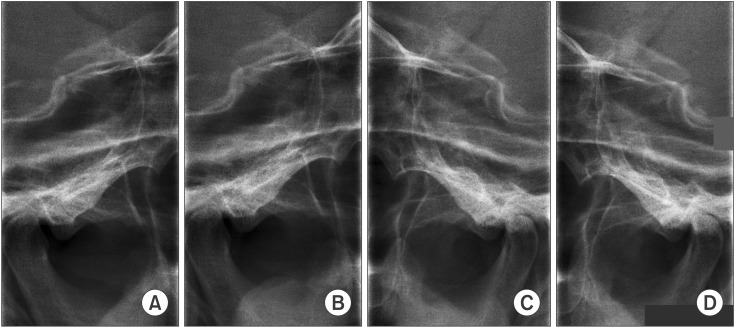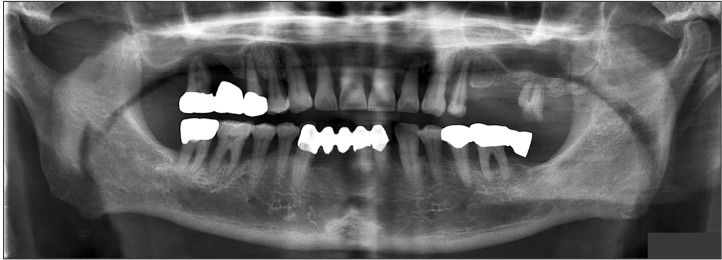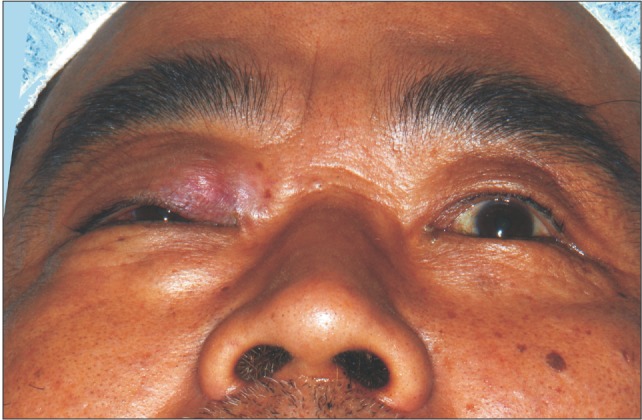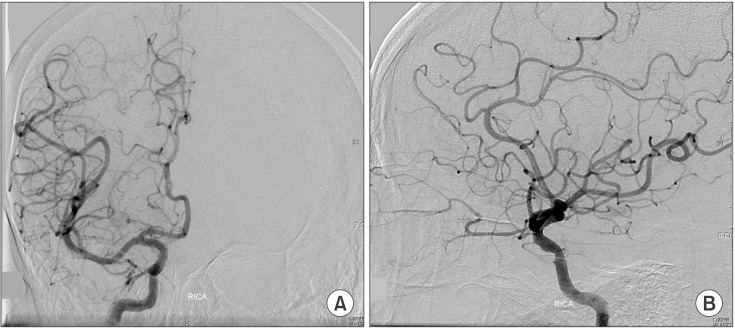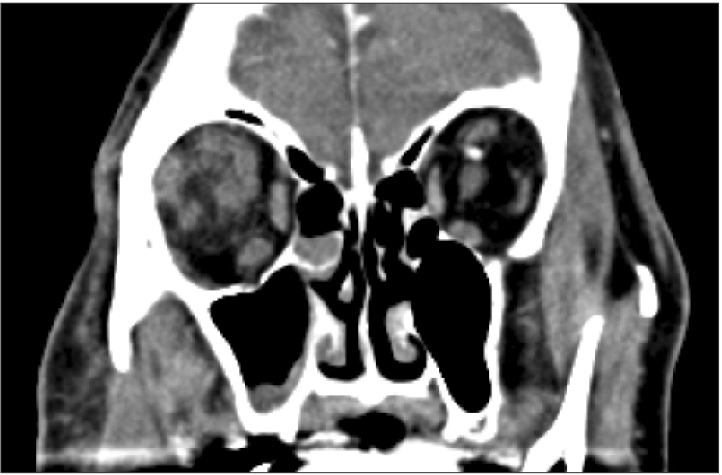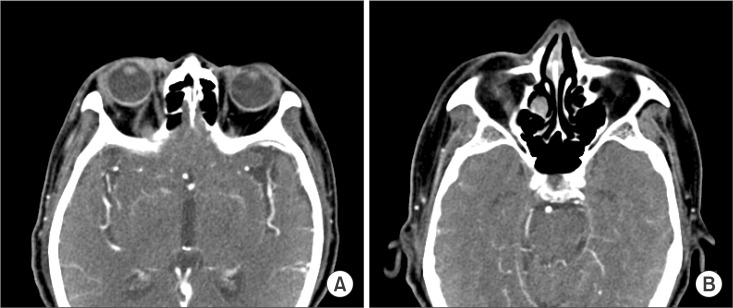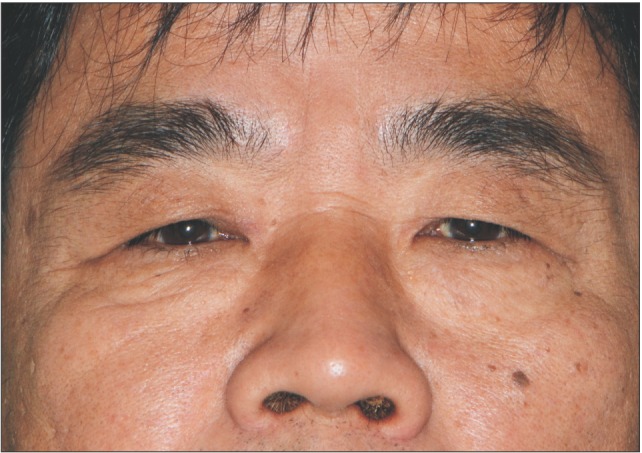J Korean Assoc Oral Maxillofac Surg.
2015 Feb;41(1):43-47. 10.5125/jkaoms.2015.41.1.43.
Cavernous sinus thrombosis progression from trismus
- Affiliations
-
- 1Department of Oral and Maxillofacial Surgery, Gachon University Gil Medical Center, Incheon, Korea. face@gilhospital.com
- KMID: 2328653
- DOI: http://doi.org/10.5125/jkaoms.2015.41.1.43
Abstract
- In the Department of Oral and Maxillofacial Surgery, patients with trismus can be easily identified. If the cause of trismus is infection of the masticatory space near the pterygoid plexus, the possibility of cavernous sinus thrombosis should be considered. We report the case of a patient who presented with limited mouth opening and progressed to cavernous sinus thrombosis, along with a review of the relevant literature.
Figure
Reference
-
1. Lyons JB. An early diagnosis of cavernous sinus thrombosis. J Ir Med Assoc. 1962; 50:76. PMID: 14467649.2. Pavlovich P, Looi A, Rootman J. Septic thrombosis of the cavernous sinus: two different mechanisms. Orbit. 2006; 25:39–43. PMID: 16527775.
Article3. Bentham JR, Pollard AJ, Milford CA, Anslow P, Pike MG. Cerebral infarct and meningitis secondary to Lemierre's syndrome. Pediatr Neurol. 2004; 30:281–283. PMID: 15087108.
Article4. Mazzeo VA. Cavernous sinus thrombosis. Report of a case. J Oral Med. 1974; 29:53–56. PMID: 4524268.5. Lee JH, Lee HK, Park JK, Choi CG, Suh DC. Cavernous sinus syndrome: clinical features and differential diagnosis with MR imaging. AJR Am J Roentgenol. 2003; 181:583–590. PMID: 12876052.
Article6. Horowitz A, Spendel D, Kraut R, Orentlicher G. Cavernous sinus thrombosis as a result of a fungal infection: a case report. J Oral Maxillofac Surg. 2013; 71:1899.e1–1899.e5. PMID: 23945514.
Article7. Watkins LM, Pasternack MS, Banks M, Kousoubris P, Rubin PA. Bilateral cavernous sinus thromboses and intraorbital abscesses secondary to Streptococcus milleri. Ophthalmology. 2003; 110:569–574. PMID: 12623823.
Article8. Goawalla A, Mansell N, Pearson A. Septic cavernous sinus thrombosis with bilateral secondary orbital infection. Orbit. 2007; 26:113–116. PMID: 17613858.
Article9. Bhatia K, Jones NS. Septic cavernous sinus thrombosis secondary to sinusitis: are anticoagulants indicated? A review of the literature. J Laryngol Otol. 2002; 116:667–676. PMID: 12437798.
Article10. DiNubile MJ. Septic thrombosis of the cavernous sinuses. Arch Neurol. 1988; 45:567–572. PMID: 3282499.
Article11. Childs HG Jr, Courville CB. Thrombosis of the cavernous sinus secondary to dental infection. Am J Orthod Oral Surg. 1942; 28:B367–B373.
Article12. Kurzer A, Patel MP. Superior orbital fissure syndrome associated with fractures of the zygoma and orbit. Plast Reconstr Surg. 1979; 64:715–719. PMID: 504497.
Article13. Chen CT, Wang TY, Tsay PK, Huang F, Lai JP, Chen YR. Traumatic superior orbital fissure syndrome: assessment of cranial nerve recovery in 33 cases. Plast Reconstr Surg. 2010; 126:205–212. PMID: 20595868.
Article14. Desa V, Green R. Cavernous sinus thrombosis: current therapy. J Oral Maxillofac Surg. 2012; 70:2085–2091. PMID: 22326173.
Article15. Berge J, Louail C, Caillé JM. Cavernous sinus thrombosis diagnostic approach. J Neuroradiol. 1994; 21:101–117. PMID: 8014656.
- Full Text Links
- Actions
-
Cited
- CITED
-
- Close
- Share
- Similar articles
-
- A Case of Cavernous Sinus Thrombophlebitis Secondary toAcute Isolated Sphenoid Sinusitis
- A Case of Bilateral Cavernous Sinus Mucormycosis
- Cavernous sinus thrombosis caused by a dental infection: a case report
- Cavernous Sinus Thrombosis Caused by Aspergillus
- A Case of Septic Cavernous Sinus Thrombosis Complicated by Sepsis

